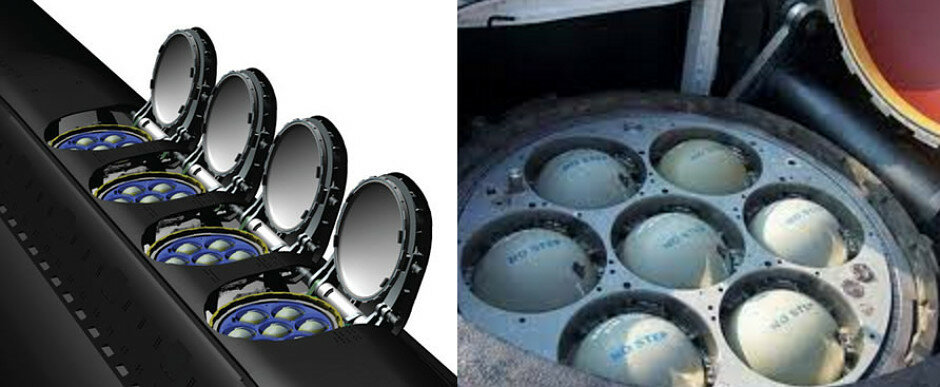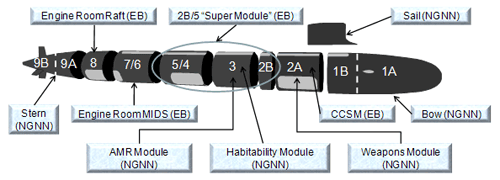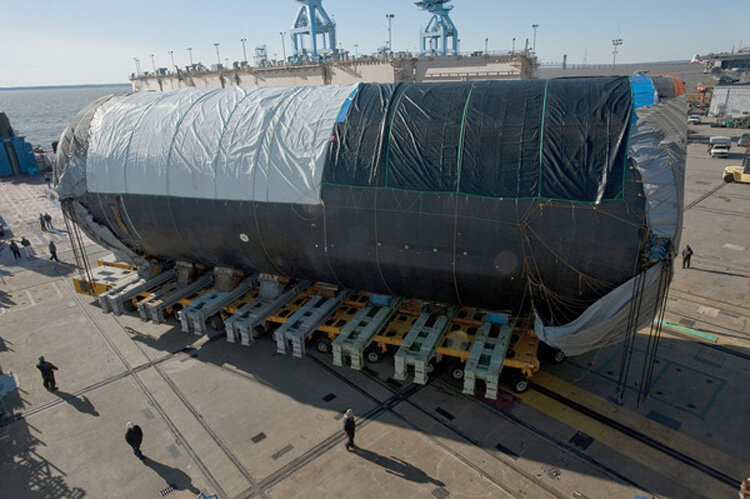More details on Australia's intended acquisition of nuclear-powered submarines have come to light this week following a Senate Estimates hearing and an interview given to the AFR by Defence Minister Peter Dutton
Both confirmed that Australia is seeking an unchanged mature design - either the UK Astute class or the US Virginia class – but sources told the AFR that Defence is leaning towards the Virginia class.
The sources also indicated that the rear half of the submarine and the nuclear reactor would be built overseas and joined together with a locally-built front half. According to the AFR, Defence has told industry that the submarine will include about 40 percent local industry content.
Vice Admiral Jonathan Mead told a Senate Estimates hearing that British and American designers are coming to Australia next year as part of the 18-month planning and evaluation process, which VADM Mead said would report to government 'regularly' and government will then decide whether that information is made public.
VADM Mead also said that Prime Minister Scott Morrison has personally established the timeline of having the first Australian boat "in the water by 2040" but VADM Mead could not define what "in the water" means in the Prime Minister's context - whether that is an operational submarine or one prior to commissioning. The task force will identify this timeline and examine options of bringing that date forward or not over its 18-month tenure.
When asked if the RAN would lease British or American submarines to fill the capability gap as the Collins class nears the end of its life, Defence Department Secretary Greg Moriarty appeared to suggest that was not on the cards.
Nonetheless, Chief of Navy Michael Noonan agreed that hull fatigue would affect the operational capabilities of the Collins class in response to a question posed by Senator Kimberley Kitching.
"Does this mean if hull fatigue is starting to impact Collins, it reduces their operational capabilities?" Senator Kitching asked.
"That is a fair characterisation," VADM Noonan replied.
"So how does that fit with the second Life of Type Extension [LOTE]?"
"If we were to see evidence of hull fatigue at the 40 year mark, it would mean that consideration of a second LOTE would need to take that into account and might see us considering the potential life of a second LOTE – it may be less than ten years – or we may need to put operational restrictions on the submarines.
"So yes, hull fatigue will be an important factor in determining whether it is possible to extend the Collins class beyond the planned LOTE period."
The hearing also revealed that Cabinet only signed off on the AUKUS decision 'a day or two' before the public announcement on September 16, Minister Dutton spoke to his French counterpart the day before the announcement, and CDF General Angus Campbell spoke to his counterpart only after the announcement.
Both CDF or Secretary Moriarty said they had not been party to discussions on potentially expanding AUKUS to include New Zealand, Canada or Japan.
If Defence's preference for the Virginia class is correct, it would reinforce existing questions over the influence of Don Winter, a former US Navy secretary and Prime Minister Scott Morrison's personally-appointed special advisor on naval shipbuilding, as well as the government's Submarine Advisory Committee, which 'provides independent critical peer review of the current and projected submarine capability'.
The members of this committee include Jim Hughes, a former vice president of submarines at Newport News Shipbuilding (the company that constructs the Virginia class submarines for the US Navy), and Donald Kirkland, Chairman of the Board of Huntington Ingalls Industries (HII - the company that owns Newport News Shipbuilding). This committee was appointed by Minister Dutton and Minister for Defence Industry Melissa Price.
According to Greg Sammut, General Manager Submarines, the role of this committee in acquiring the nuclear-powered boats 'hasn't been determined yet' and he could not say when it would be determined - although the three committee members have reportedly identified 'conflicts of interest' which Sammut says will be factored into any role that committee plays in the acquisition.
"Given the role of Kirkland as chairman of HII, and that organisation's role in building the Virginia class, has that been identified as a conflict of interest?" Senator Jordon Steele-John asked.
"They continue to review the work we're doing on Collins and within their remit look at how we are winding down the Attack program," Sammut replied. "Whilst that is their remit there is no conflict of interest."
In a separate discussion of the Sovereign Shipbuilding Talent Pool (SSTP), which is a mechanism to redistribute Naval Group and Lockheed Martin workers affected by the cancellation of the Sea 1000 contract, Deputy Secretary of National Naval Shipbuilding Tony Dalton revealed that other companies' employees eligibility for the SSTP will effectively be decided on a case by case basis.
So far, over 560 eligible people have been affected by the contract cancellation and 286 have applied for assistance through the SSTP, but only 13 job offers have been made and 11 people have accepted a new job.







